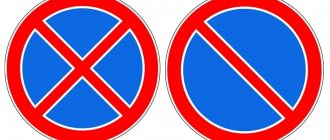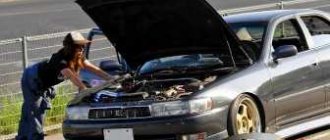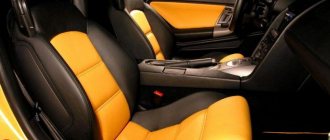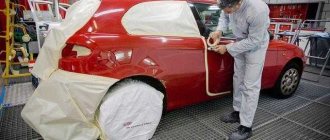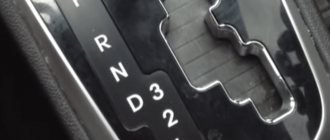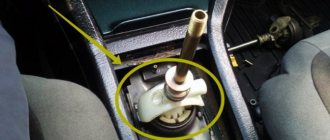What is the difference between manual transmission and automatic transmission when towing?
Before we take a closer look at the differences between towing cars with an automatic transmission and a car with a manual gearbox, it is necessary to recall the key general requirements of the traffic rules regarding towing.
These rules require that the towing vehicle be technically sound, it must move with the low beams on, and the towed vehicle must have the hazard lights on and the steering and brakes working normally. The rigid coupling used for towing must be reliable. Both drivers are also required to know well the requirements for their cars - the operating instructions for the automatic transmission, which, as a rule, specifically indicate which operations in relation to it are undesirable or unacceptable. It should also be taken into account that there are some specific models with an automatic transmission, which the manufacturer prohibits from towing for various reasons, explaining in detail in the factory instructions why it cannot be towed. Then the only option is to use a tow truck. How to tow a regular car with a manual transmission is well known. However, not all recommended actions are suitable for a car with an automatic transmission. Here are a few important “knots to remember” regarding towing a car with an automatic transmission:
- towing speed limit is 50 km/h;
- limiting the distance over which a car must be towed to a distance of 40 km.
If the engine is running, it is possible to travel a distance exceeding 40 km, because then, due to the operation of the oil pump and maintaining the required oil pressure, the necessary functional load is provided to the brake system and power steering. The only exception is a gearbox malfunction. For any towing option, the selector lever must be set to the neutral “N” position.
Towing a car with a CVT differs in some nuances, namely:
- it is necessary that the engine is started;
- The gearshift lever should be set in the “N” position;
- The speed of the vehicle must be limited to 50 km/h, and the towing distance must be limited to 50 km.
What cars can be “killed” by towing?
General towing requirements
The towing vehicle must have low beam headlights on, regardless of the time of day. The towed vehicle should be marked with an alarm or warning triangle. The speed limit when towing should not exceed 50 km/h, regardless of whether the movement occurs in urban or rural areas.
At the same time, the length of the tow rope matters. With a long cable, the towed car can skid when turning, but with a short “tug” the cars run the risk of “kissing”. Hence the traffic rules requirements: when towing with a flexible hitch (steel or fabric cable), the distance between the towing and towed vehicles must be ensured within 4 - 6 meters. With a rigid coupling (the towing device is made of metal and has a non-bending design), the distance between the machines should be no more than four meters.
Transportation on a flexible hitch
Photo: iStock
Towing vehicles on the most common flexible hitch cannot be carried out if the steering is faulty and the brake system is faulty.
In addition, according to traffic regulations, such towing should only be carried out if there is a driver behind the wheel of the towed vehicle. But transporting passengers in a vehicle being towed is strictly prohibited.
Please also note that from April 2021, requirements will be imposed on the driver of a towed car - his driving experience must not be less than two years. However, violators do not face the most severe fine - a warning or 500 rubles.
Transportation on a rigid hitch
Photo: youtube
Metal devices for rigid coupling can have different designs and several attachment points. If there are several attachment points, this allows the towed vehicle to move on a straight section of the road along the same path as the towing one.
Only in this case is it allowed that there may not be a driver behind the wheel of the towed car. In other cases, a person with a driver's license is required to drive. The transportation of passengers in towed vehicles is prohibited.
Transportation by partial load
Photo: iStock
With this method of transportation, a crane or specialized vehicle is used as a tug. One of the axles of the towed vehicle is raised and placed on a special cart or platform.
In some cases, dolly trolleys (dolly) are also used for the second axle. Accordingly, it is possible to transport vehicles with faulty braking or steering systems this way. In this case, there should be no passengers or driver in the towed vehicle, as well as people on the towing platform.
Transportation of a car by full loading method
Photo: iStock
As you understand, this is the safest, but also the most expensive method of transportation. The machine is loaded onto the platform using a winch or crane and transported to the desired location.
When towing is prohibited
Photo: iStock
There are many cases in which towing is prohibited. For example, there is a ban on “weight category”. If the curb weight of the towed vehicle is more than half the weight of the “tractor”.
A ban has also been imposed on towing due to weather conditions: you cannot tow a car on a flexible hitch during icy conditions and heavy snowfall. Towing two or more vehicles is also prohibited. Finally, bicycles and mopeds cannot be towed on a flexible hitch, and motorcycles without side trailers cannot be towed or towed.
Towing vehicles with automatic transmissions
Photo: iStock
Cars with automated transmissions (and these are hydromechanical “automatic”, CVT, “robot” and preselective “robot”) are not recommended to be towed over long distances - almost every experienced owner of a car with two pedals knows this. The fact is that when the engine is not running, the elements of the automated gearbox remain without lubrication, since the oil pump only works in conjunction with the power unit. This threatens overheating and failure of transmission elements. This circumstance is the main reason why you cannot tow a car with an automatic transmission, “robot” or CVT.
However, even with the engine running, there are restrictions on towing vehicles with two pedals. The coupling should be as rigid as possible. During transportation, it is necessary to check the level of transmission oil, which is consumed more intensively during towing.
For automatic transmissions with 4-6 stages, the maximum transportation distance should not exceed 50 km, and the towing speed should not be higher than 40 km/h. In any case, the automatic transmission selector is set to position N when towing. To carry out this procedure with the engine not running, the automatic transmission must be unlocked. For this purpose, there is a technological groove on the selector platform, covered with a decorative cover. You need to remove it, then insert a screwdriver into the hole, while simultaneously moving the lever to “neutral” with the other hand. If you need to cover more than 20-30 km in this mode, it is recommended to “cool” the automatic transmission, stopping towing for at least half an hour.
Towing vehicles with four-wheel drive
Photo: iStock
Towing a four-wheel drive vehicle is not recommended, regardless of the type of transmission (manual, automatic, CVT or robot). The use of a flexible hitch is allowed only for the shortest distances. For example, to pull a stuck car out of snow or mud. Otherwise, technical problems are inevitable. Literally within 5 - 10 km, malfunctions may occur in the cardan, coupling and other transmission elements.
At the same time, owners of cars with plug-in all-wheel drive and the ability to vary 2WD and 4WD modes are in a more advantageous position than drivers of cars with permanent all-wheel drive.
The first step is to forcefully activate the front-wheel drive and move the transmission to “neutral”. If the machine is equipped with an automatic transmission, the restrictions described above must be observed. If it is urgently necessary to tow a car with permanent all-wheel drive, and it is not possible to call a tow truck, the only option left is to disconnect the driveshaft and allow the non-driving wheels to move. It is clear that in order to carry out such a manipulation, you need to have the appropriate technical skills.
Towing a vehicle equipped with an automatic transmission
The most common misconception regarding towing a car with an automatic transmission is that such a car cannot be towed, but can only be moved using the fully loaded method. We can say with confidence that this is nothing more than a myth. All automakers allow vehicles equipped with automatic transmissions to be towed with the engine running and the automatic transmission selector in N mode.
A little clarification is necessary here. When towing a car with a manual transmission and the selector in the neutral position, only the differential of the box is driven from the drive axle. When towing a car with an automatic transmission, all the shafts and gears of the gearbox are driven by the drive wheels.
Why is it so important that the car engine is running? The running engine rotates the input shaft of the automatic transmission, from which the gearbox pump is driven. The pump creates the necessary pressure and circulation of hydraulic fluid in the box, and it is not subject to any risks.
If a car is towed with the engine turned off, pressure and circulation of hydraulic fluid, which simultaneously acts as a lubricant and coolant, is not created in the box. In this case, increased friction between the components and assemblies of the gearbox is possible, as well as an increase in the temperature of the fluid and, as a result, overheating of the gearbox. Naturally, the above factors do not add to the “health” of the automatic transmission. Based on this, the vast majority of modern cars are equipped with additional radiators to cool the automatic transmission fluid. Therefore, we can conclude that it is possible to tow a car with an automatic transmission, you just need to start the engine.
Towing in winter
Cars with automatic transmission require special care. First of all, this concerns warming up the box and its main elements.
In summer, it takes minimal time to warm up. Another thing is winter, when reaching the operating temperature of the “automatic” occurs with a long delay.
Before starting to drive, you should move the automatic transmission handle in different positions, trying not to linger in each of them.
In addition, when towing a car in winter, consider the following recommendations:
- it is better to carry out the towing process using a rigid hitch;
- when driving in the dark (in bad weather), the headlights of the car ahead must be turned on;
- In icy conditions, you should move at a lower speed (up to 30-40 km/h).
Consequences of improper towing
To decide whether to tow your car automatically or not, we advise you to familiarize yourself with the possible consequences of such actions. The most unfortunate result of illegal towing is a burnt-out torque converter module. Replacing this part is usually equal to 5% of the cost of the entire car. For each car, this cost is individual, but in any case it is not small. In addition, the most common breakdowns caused by non-compliance with the rules are:
- faulty engine pumping too much oil;
- gear failure in the automatic transmission (when towing in position “D”);
- Electronics malfunctions occur on robotic boxes;
- on variators, the soft elements of the internals of the automatic transmission are destroyed.
Any of these breakdowns will cost its owner a tidy sum. In any case, the possible repair of any of these problems (and in many cases there is a risk of several breakdowns at once) will cost more than the services of a tow truck. In addition, we should not forget that towing another car often increases the risk of an accident. Be careful on the road.
How to tow a car with an automatic transmission?
First of all, of course, if possible, it is better to look at the service book and read the manufacturer’s recommendations. It should indicate: a possible method of emergency transportation, the maximum permissible speed, the maximum distance over which towing is allowed for a specific car model. But this is ideal. As a rule, the driver does not have this opportunity. Therefore, you should remember a few simple recommendations that explain how to tow a car with an automatic transmission.
Consequences of transporting a car with an automatic transmission without following the rules
It is important to adhere to the manufacturer’s advice and practice-developed rules for towing a car with an automatic transmission because otherwise the transmission may be seriously damaged due to overheating and insufficient lubrication. The most common faults are presented in the table below.
| Type of malfunction | Nuances |
| Torque converter module burnout | One of the most serious consequences observed if towing is incorrect, and is expressed in the machine slipping or its complete loss of performance. Replacing this component can cost up to 5% of the total price of the vehicle. |
| Melting of gearbox components | Signs of slipping are similar to those above. Repair involves replacing failed parts. |
| Premature wear of machine elements | It is expressed in the transmission slipping in certain operating modes, primarily when moving forward. To return the transmission to working condition, it is necessary to replace worn parts. Most often you have to change clutches. |
Read
Which is better and more reliable, CVT or automatic?
Other typical breakdowns that may occur if you tow a car with violations are:
- failure of the oil pump;
- gear failure;
- destruction of soft internal components in the variator box;
- malfunctions of the electronics in the robot box.
Each of these problems requires expensive repairs, which is why it is so important to tow according to the basic rules.
Sequence of actions when towing a car with automatic transmission
The driver’s main rule in any emergency situation is not to lose composure and try to analyze the current situation objectively, without panic. It’s good if an experienced professional is nearby and real driver solidarity is shown - then the likelihood of making a mistake will be negligible. To find out how to properly tow a car, you need to take into account all the practical advice from outside and the corresponding guidelines in the instructions of both cars - both the towed one and the one acting as a tractor. Estimate where the car needs to be pulled, the distance and speed at which the damaged car will be moved. In practice, often both drivers draw up a clear plan for joint, coordinated efforts to act in unison. Determine the degree of risk: if they are high, you should consider calling a tow truck. Such a solution may sometimes turn out to be more expensive, but it is the most optimal.
How many kilometers can you tow a car with an automatic transmission?
Motorists are also interested in how much they can tow with an automatic transmission:
- It can be towed over short distances. Standard – no more than 40 kilometers. This is enough to deliver the vehicle to the nearest service.
- There are also speed limits - try not to exceed the threshold of 50 km/h - this will keep the car components intact and also ensure the safety of the driver and pedestrians.
Towing is also possible with the engine running. When it starts, the oil pump is activated, providing constant pressure in the automatic transmission. In this case, the power steering and brake mechanism work, so the car can be delivered over considerable distances. An exception is problems with the automatic transmission, due to which the car does not work. A functioning internal combustion engine can aggravate the situation and lead to the gearbox being beyond repair.
Roadside assistance - to take or not to take
And one more question, the answer to which we will give today, is “is it possible to tow another car with an automatic machine”? Anything can happen on the road, and the bonds of automotive brotherhood are strong thanks to a simple principle - if you help, they will help you!
Imagine, it’s night, there’s a highway, you can’t call the towing service, but on the road there’s only you and a car enthusiast who really needs your help, and you have an automatic transmission. Without creating any intrigue, let's say that it is definitely possible to tow another car automatically, however, even in this case, you will need to follow a number of simple rules in order to neutralize the consequences of additional load on your transmission:
1.Do not tow a vehicle that weighs more than your car. It is optimal if the towed one is much lighter, but even if the weight is almost equal, you can help. If necessary, reload the luggage onto the towing vehicle.
2.Before towing, make sure that your transmission does not need to be topped up with oil. Insufficient oil level will cause overheating and damage to the automatic transmission.
3. Tow only in 2-3 gears, never in 1st or Drive mode - uniform movement is the key to health for your transmission.
4. Do not under any circumstances “rush” from a place and do not allow sudden jumps in speed when moving.
5.Make sure the cooling system is functioning normally; when towing, overheating and damage to the torque converter part of the radiator is possible.
6.The speed of forty km/h when towing is your limit - do not exceed it.
7. Every 20-25 kilometers traveled, stop for 5-10 minutes - let the overheated gearbox components cool down.
8.Try to replace the tow rope with a rigid vehicle clutch - this will ensure additional smoothness of movement.
If the transmission is automatic, can I tow another car?
Automatic transmission is a mechanism with which you need to be very careful. Extra loads are not for him. But anything can happen on the road. Therefore, it will be useful for owners of automatic transmissions to know not only how to tow a car with an automatic transmission, but also how, if necessary, to act as a tow vehicle without damaging your car.
First of all, you need to know what permissible weight the car can tow. This should be indicated in the vehicle manual. But, based on reality, usually hands do not reach the “primers”. Therefore, it is important to know the following:
- In no case should the weight of the towed vehicle exceed the weight of the towing vehicle. Otherwise, the increased load will increase the temperature of the torque converter, which will have a detrimental effect on the elements of the box.
- It is advisable to use a rigid hitch when towing. You need to start and move extremely smoothly, without sudden acceleration or braking. Such measures are explained by the fact that during a jerk a dynamic load is created, which is an order of magnitude greater than the static one. That is, the weight of the towed vehicle increases greatly with uneven movement. Consequently, the load on the automatic transmission will exceed the permissible limit. And this, as already mentioned, is very bad for an “automatic machine”.
- The driving mode when towing should be selected so that the automatic transmission does not shift beyond third gear. Increased speed under the influence of additional load leads to heating of the transmission.
Warming up the automatic transmission
Since, acting as a tractor, a car with an automatic transmission is subject to increased load, the oil in it should be slightly warmed up before towing. Especially in winter. To do this you need to start the engine. And, pressing the brake pedal, switch the gearbox selector, holding it in each position for 15-20 seconds. After a minute or a minute and a half you can start moving. In conclusion, we can say that a car with an automatic transmission is not much different from a car with a manual transmission in terms of towing. The main thing is to be extremely attentive and careful.
Towing a car with automatic transmission with the engine not running
What should you do if you cannot start your car engine and the car needs to be towed? In this case, you need to get the cable and get ready to tow the car, nothing new. If certain rules are followed, towing a car with the engine turned off is not harmful or dangerous.
As you already know, when towing a car with the engine turned off, the gearbox takes the brunt of the impact. This is due to increased friction between the automatic transmission components and lack of fluid circulation, which can cause the automatic transmission to overheat and fail. To minimize these impacts, you must follow the vehicle's towing schedule as prescribed by the manufacturer. You can find out the towing modes in the vehicle's operating instructions. You should be interested in the following parameters:
- Maximum speed when towing;
- Maximum towing distance.
It is highly recommended not to exceed the recommended limits. Even a slight excess of the above parameters can negatively affect the service life of your automatic transmission.
With the engine off, your main task is to prevent the automatic transmission from overheating. The heating of the gearbox is precisely influenced by the speed and duration of exposure to negative factors (distance).
For greater peace of mind, it is recommended to reduce the parameters prescribed by the manufacturer by half, and also stop every 15-20 minutes and let the gearbox cool.
Towing methods
Today, there are three options for towing a vehicle:
- using a tow truck;
- using a flexible coupling by connecting the vehicle with a cable;
- rigid coupling, for which appropriate towing devices are used.
Using a tow truck for transportation
A tow truck is considered the most reliable, safe and expensive way to transport passenger vehicles, including car models with a CVT, manual transmission or automatic transmission, which cannot move on their own.
During transportation, the likelihood of additional damage to the vehicle is practically reduced to zero . This option is the only one available for vehicles with all-wheel drive, and is also recommended for vehicles with an automatic transmission. The process of such transportation reduces the likelihood of breakdown and general deterioration of the vehicle.
Use of flexible coupling technologies
A flexible coupling is the connection of several vehicles with a cable. Despite the existing shortcomings, this method is most widespread. Particular attention must be paid to the length and quality of the cable. It has been established that between two cars connected by a cable, the distance between them should be in the range of 4–6 meters, and the speed of movement on a dry road surface should be less than 50 kilometers per hour, and on a wet road surface – thirty.
Application of rigid coupling
Towing with a rigid coupling is used using special reinforced devices that limit the freedom of movement of the transported vehicle. The distance between them is less than 4 meters, and there are also a number of restrictions on weight and speed of movement. This method is considered safer compared to the flexible coupling option, but, unfortunately, it requires special additional equipment, which is sometimes quite difficult to find.


